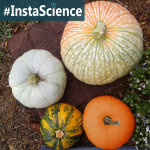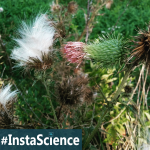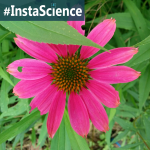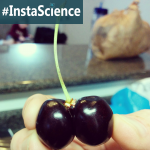When one thinks of fall, we almost immediately envision pumpkins! Big, fat, orange pumpkins. But there are lots of different varieties of pumpkins – some are big and orange, some are brownish with long necks, and some are blue! Inside, pumpkins all have a yellowish-orange flesh. Did you know that pumpkins are fruits? And that pumpkins are most closely related to cucumbers, squashes, and … [Read more...]
Bull Thistle {InstaScience}
Bull Thistle is one of those "weeds" that almost all of us are familiar with! Its characteristic purple flowers are easy to spot as they adorn the top of the stem. Plus, its spiky stem acts like a sentinel on the border of vacant fields and along trails. This weed definitely prefers wide, open, sunny areas! But did you know that the flowering stems you see are actually the second year … [Read more...]
Composite Flowers {InstaScience}
This purple coneflowers is known as a composite flower. In these types of flowers, what we see as one bloom is actually a composite of two different type of flowers! There are: Simple ray flowers (outside), which serve to attract pollinators. Complete disc flowers (inside) where the pollination actually occurs. Fun Fact - Sunflowers are also composite flowers! Teaching Science at … [Read more...]
Double Cherries {InstaScience}
We love fresh cherries in our house - a bag of them does not last very long between the four of us. But a recent chance pull of some double cherries led us to set down the bag and learn some science instead! We guessed that these double wonders were products of a seed split or maybe some genetic mutation. So, we weren't so keen to actually eat them. But after a bit of research, we learned … [Read more...]






Join the Community!